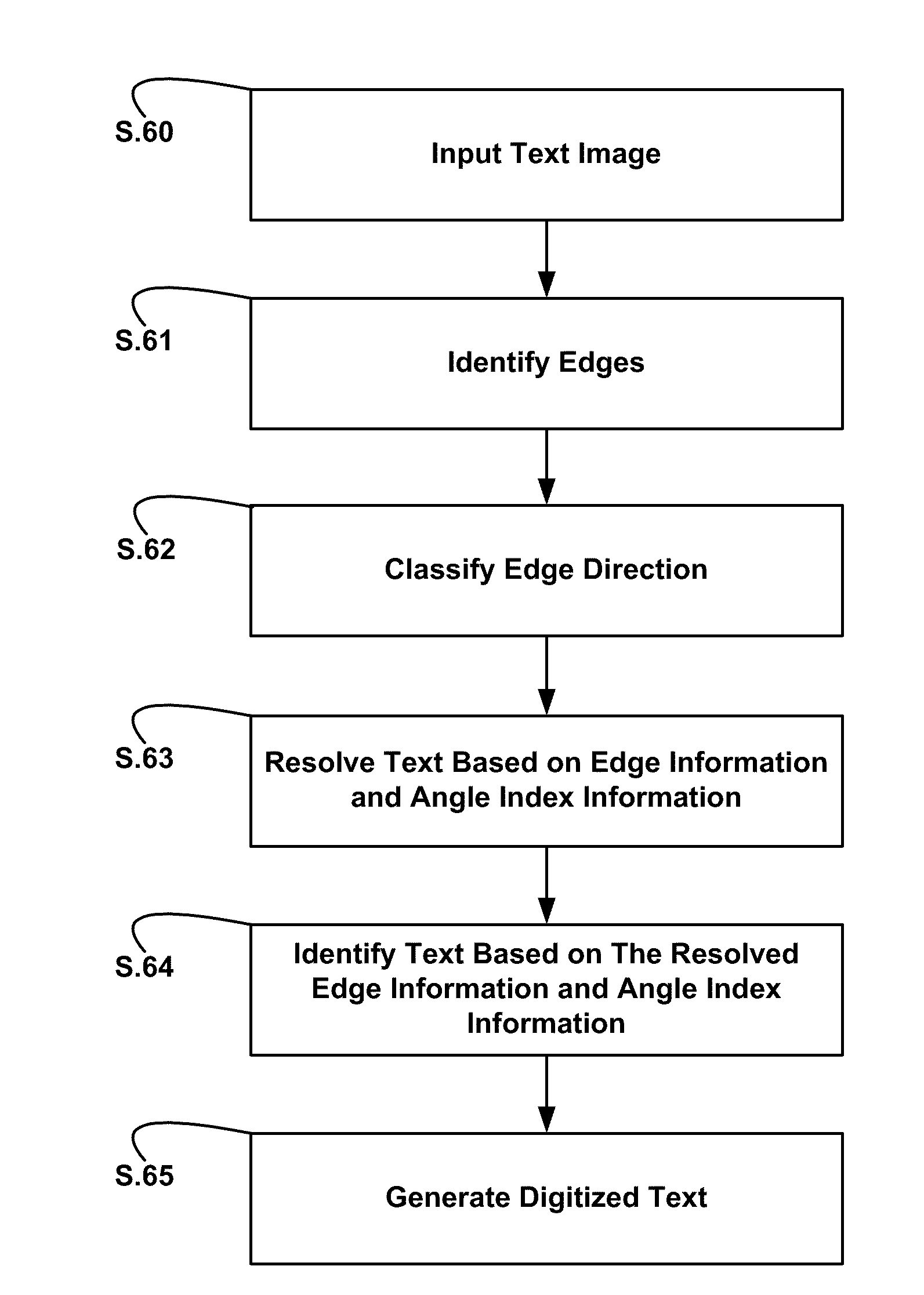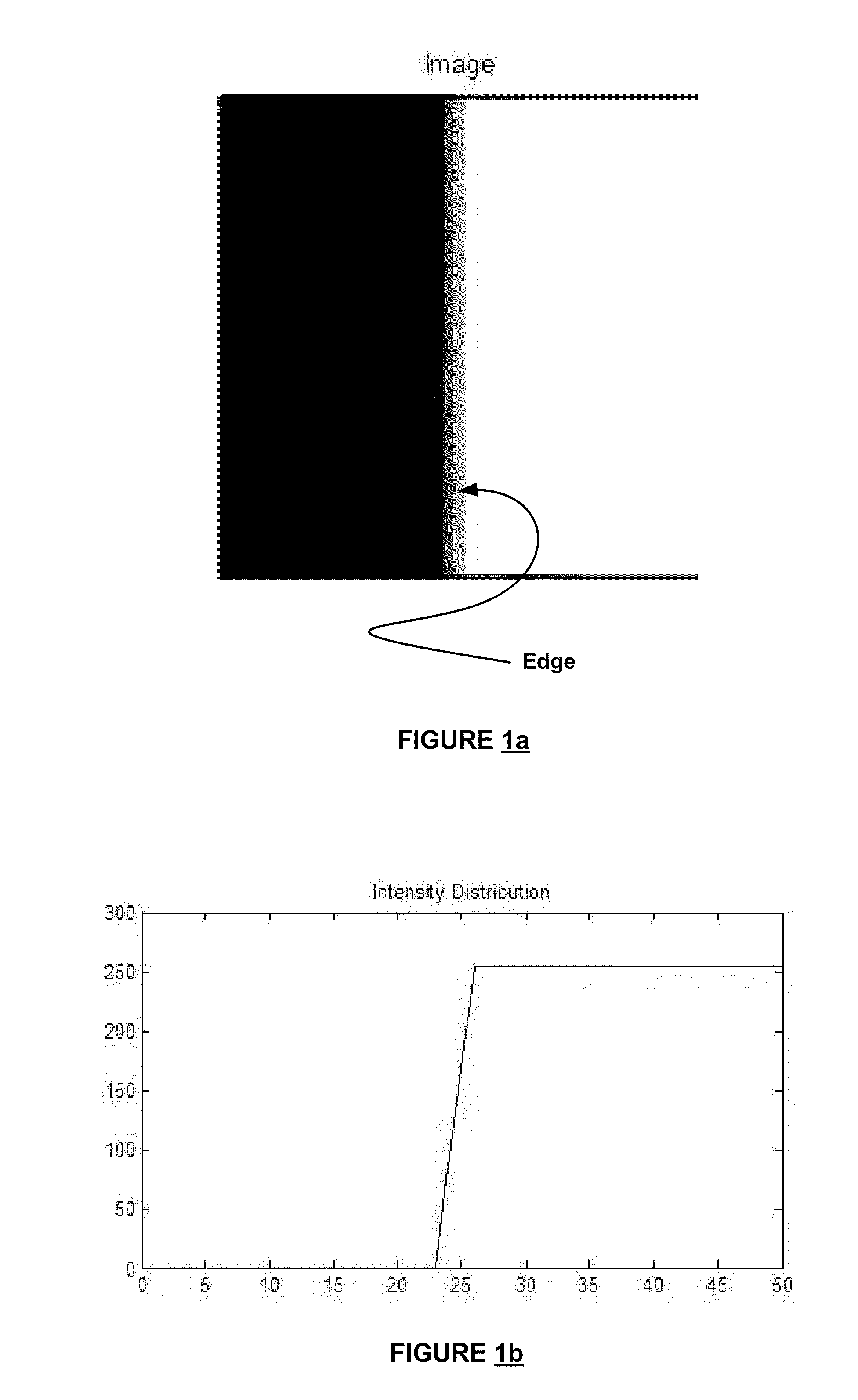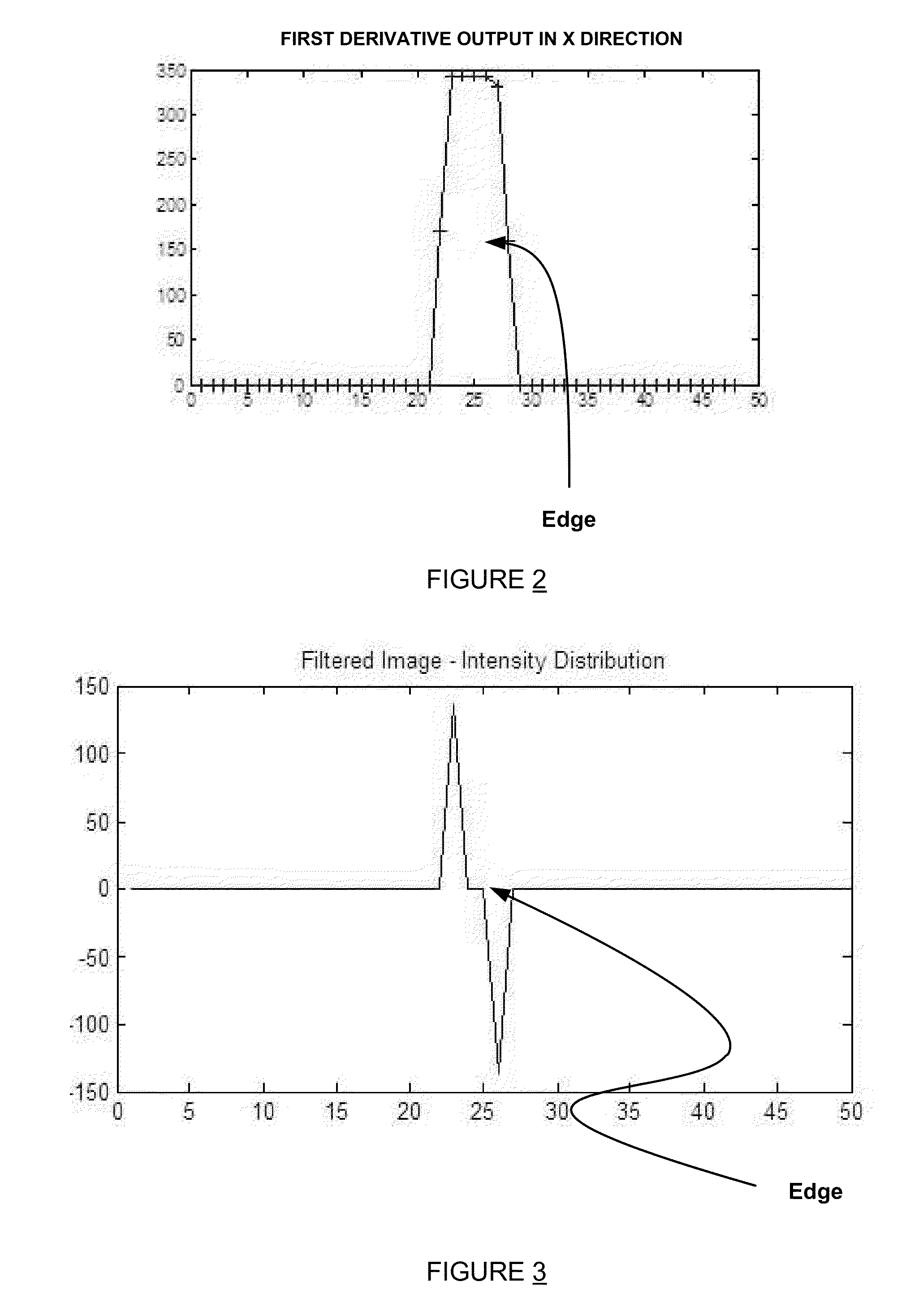Edge orientation for second derivative edge detection methods
- Summary
- Abstract
- Description
- Claims
- Application Information
AI Technical Summary
Benefits of technology
Problems solved by technology
Method used
Image
Examples
Embodiment Construction
[0041]Described herein are various exemplary embodiments of methods and systems consistent with the invention. These embodiments are exemplary and should not be interpreted to limit the scope one of ordinary skill would give to the invention.
The Algorithm
[0042]An exemplary embodiment of an algorithm for determining edge orientation information from the second order derivative of an intensity distribution function of an image is illustrated in FIG. 4. First, for each identified edge identify transitions (zero-crossings) in the horizontal direction in the intensity distribution, that is, identify low to high transitions and high to low transitions in the direction of the x-axis (S.1). Next, for each identified edge identify transitions (zero-crossings) in the vertical direction in the intensity distribution, that is, identify low to high transitions and high to low transitions in the direction of the y-axis (S.2). For each identified edge, identify the orientation of the edge based on...
PUM
 Login to View More
Login to View More Abstract
Description
Claims
Application Information
 Login to View More
Login to View More - R&D
- Intellectual Property
- Life Sciences
- Materials
- Tech Scout
- Unparalleled Data Quality
- Higher Quality Content
- 60% Fewer Hallucinations
Browse by: Latest US Patents, China's latest patents, Technical Efficacy Thesaurus, Application Domain, Technology Topic, Popular Technical Reports.
© 2025 PatSnap. All rights reserved.Legal|Privacy policy|Modern Slavery Act Transparency Statement|Sitemap|About US| Contact US: help@patsnap.com



